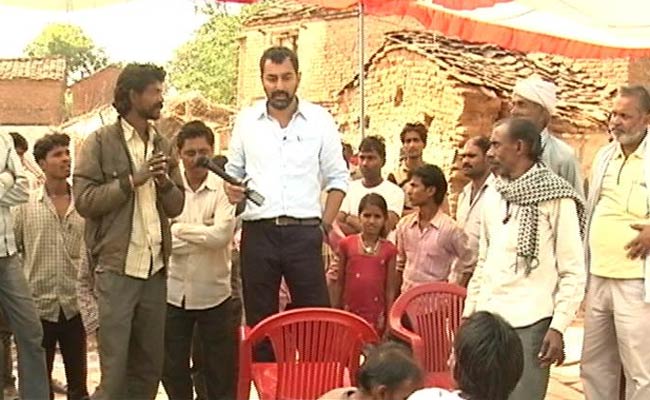The shadow of drought has deepened across Uttar Pradesh. Fifty of the state's 75 districts have been officially declared as drought-hit. Through this week, NDTV's Truth vs Hype show reports from one such region, Bundelkhand, where successive crop failures have had a convulsive impact on its people. In the third of our series, how debt and hunger has triggered a mass exodus of the kind locals say they have rarely seen.
BUNDELKHAND, UTTAR PRADESH: In a small open space in Ladwari village in Bundelkhand, a group of men sit amongst giant pots of vegetables: tomatoes, onions, brinjal. In one corner, a large vat of chickpeas simmers on a chulha, or earthen stove.
It is a startling sight in this impoverished region, ravaged by drought and this time, even hunger.
The villagers tell us it is preparation for a wedding feast.
Khushilal, the father of the bride, says the baraat will arrive later in the day. He says he plans to serve puri-chollay, raita and several types of vegetables.
But an even more lavish spread of sweets is stashed away in a nearby house, behind locked doors. In a darkened room were large pots of rasgulla, boondi sev, barfi - at least seven types of mithai.
The cooks told us that they are preparing a meal for an estimated 1200-2000 people, this at a time when prices of vegetables are sky high, all the more in this rain-starved region.
Khushilal says he has taken a loan of close to Rs 2 lakh to pay for the feast, a heavy amount for someone who like most here depends for income from a meagre landholding and spells as migrant labour.
The wedding loan will only add to the debt he is already saddled with after three successive years of failed crops.
A small group of men who stand around him also reel off their debt, some of it to banks, some of it to the contractors who hire them as labour in the lean agricultural season.
One man says "not less than Rs 1 lakh." Another says "Oh, mine is way more than that. I owe more than Rs 2 lakh."

Despite drought, the government has so far failed to provide emergency back-up measures, like cash-for-work schemes.
The track record of NREGA in this village, as across Uttar Pradesh is not very good.
One villager, Bhairon Prasad, shows us his NREGA job card for the past year. Its pages are blank - there is not a single day of work.
According to government records, Uttar Pradesh has provided 24 days of NREGA work in 2014-15, one-fourth of the scheme's guarantee of 100 days of work per household per year.
This year, the scheme hasn't done any better; till December, each household had only got 19 days of work.
With no rains, and looming hunger, the spate of departures has intensified, almost akin to a mass exodus. Even in a normal year, 50 per cent of the village would migrate for work in the lean season. But in this time, we are told 90 per cent will go, including entire families turning this into a region of ghost villages.
Some say they will go to towns in Madhya Pradesh like Indore or Bhopal, to work as masons. Others mention work in brick kilns, or simply get on a train to Delhi and take their chances on arrival.
Given the levels of desperation, and the high debt, there are concerns that the terms of work could be exploitative. The brick kiln industry, for instance, where Khushilal will go to pay off his debt, is notorious for the practice of bonded labour.
Khushilal denies this. But Bhairon Prasad says that it will take Khushilal no less than five years of hard labour, in a worksite far from home, to pay off the wedding debt.
Track Latest News Live on NDTV.com and get news updates from India and around the world

